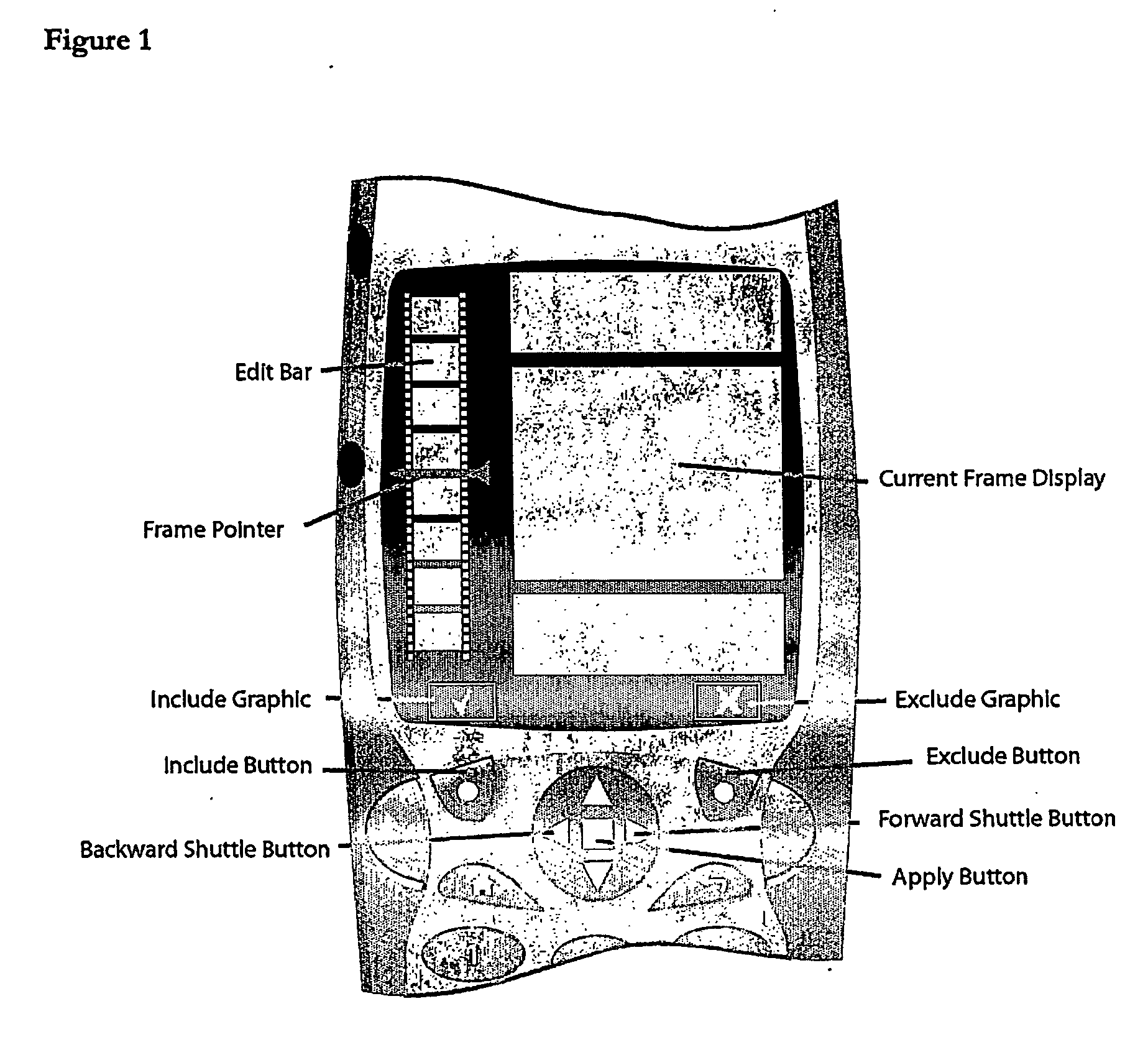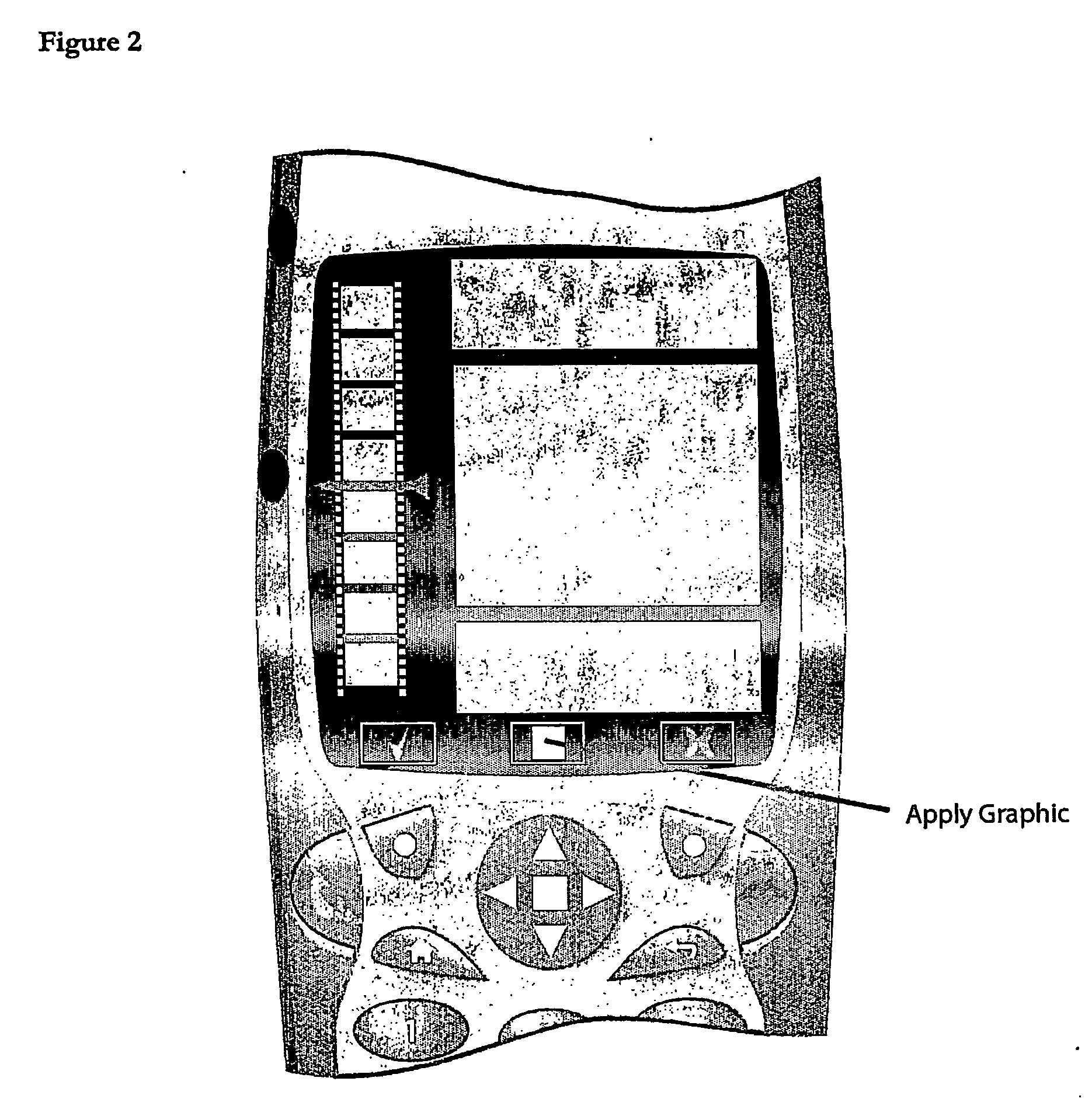Computer based system for selecting digital media frames
a computer software and frame selection technology, applied in the field of computer software system for selecting digital media frames, can solve the problems of insufficient, too expensive to justify individually, long list of manipulations made possible by such tools, etc., and achieve the effect of refined prediction
- Summary
- Abstract
- Description
- Claims
- Application Information
AI Technical Summary
Benefits of technology
Problems solved by technology
Method used
Image
Examples
Embodiment Construction
[0028] The invention is implemented in a system called VXT: VXT enables simple, predictive video message preparation, analogous to the predictive text editing for mobile ‘TXT’ing. VXT does not use the conventional editing semantics of ‘in’ and ‘out’ points; instead, it predictively determines edit limits using rules that are updated through user feedback It hence minimises the typical number of user interactions required to perform a simple video editing or trimming task.
[0029] Briefly, VXT works as follows.
[0030] The sequence of actions from the user loading a piece of digital media to the user applying the edits is called a ‘session’; the first operation the user performs during a session is called the ‘initial selection’; subsequent operations that the user performs are called the ‘refinement phase’; a frame or frames that are in the final edit are ‘included’; those that are not are ‘excluded’, an operation that causes a number of frames to change state from ‘excluded’ to ‘incl...
PUM
 Login to View More
Login to View More Abstract
Description
Claims
Application Information
 Login to View More
Login to View More - R&D
- Intellectual Property
- Life Sciences
- Materials
- Tech Scout
- Unparalleled Data Quality
- Higher Quality Content
- 60% Fewer Hallucinations
Browse by: Latest US Patents, China's latest patents, Technical Efficacy Thesaurus, Application Domain, Technology Topic, Popular Technical Reports.
© 2025 PatSnap. All rights reserved.Legal|Privacy policy|Modern Slavery Act Transparency Statement|Sitemap|About US| Contact US: help@patsnap.com



